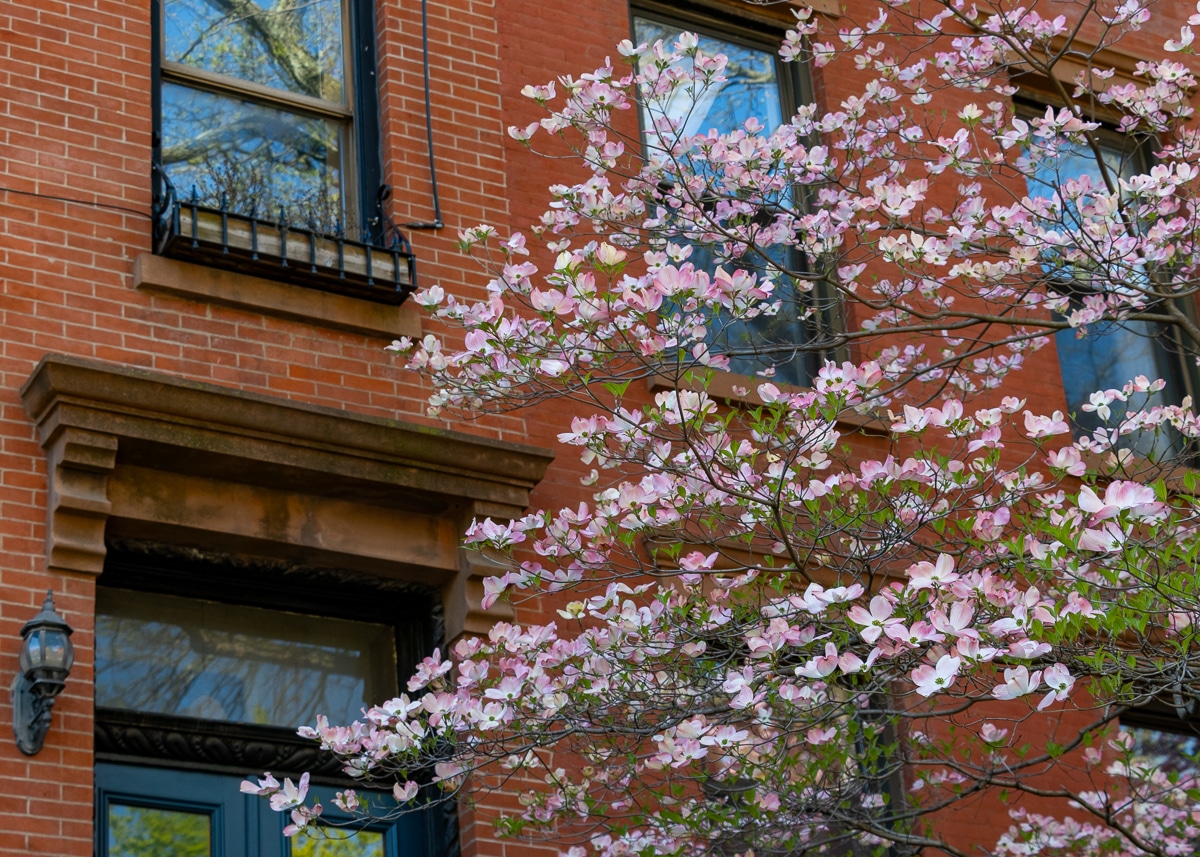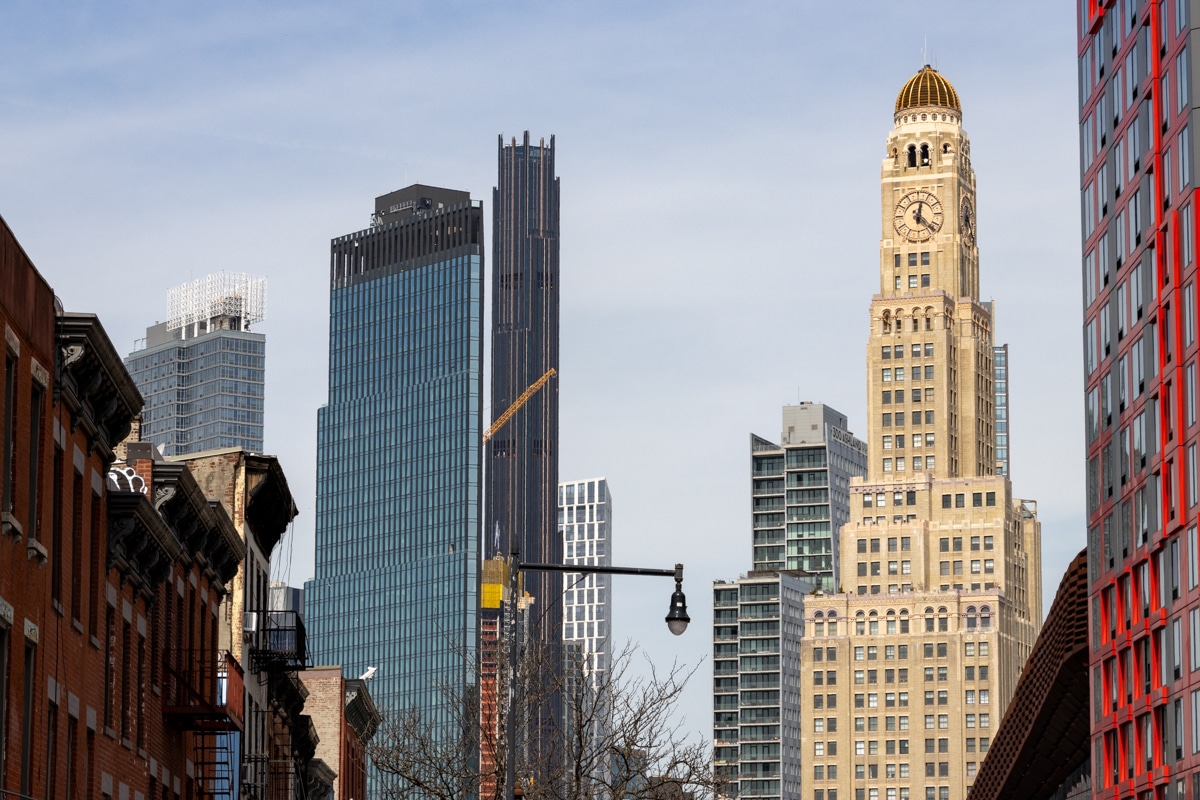Walkabout with Montrose: What's in a Name?
As American cities in the late 1800’s became more crowded, the middle and upper class, multi-unit apartment building was born. Up until that time, the private house was the preferred dwelling for anyone with means. Only the very poor lived together with strangers in tenements. These new apartment buildings were opulent and spacious, providing all…

As American cities in the late 1800’s became more crowded, the middle and upper class, multi-unit apartment building was born. Up until that time, the private house was the preferred dwelling for anyone with means. Only the very poor lived together with strangers in tenements.
These new apartment buildings were opulent and spacious, providing all the amenities of a private house, along with fine lobbies and public spaces. Residential hotels also provided the same, with added dining and service amenities.
As there were always bragging rights in living on certain streets, it soon became fashionable to live in a certain building. If that building had a name with some gravitas, or exotic cachet, all the better. This trend continued into the 20th century, and is still heartily practiced today.
How much more impressive to say I live at the Vendome, the Park Lane, the Griffin, the Royal Castle Apartments, or the Traymore. Please meet me at the Grosvenor, the Montauk, or the Bedfordshire. Mrs. Smith resides at the Alhambra, the Imperial, or the Rennaissance.
Names became marketing tools, and as upper class apartment buildings grew in popularity, more and more of them were named. This fact was not lost on those building for those of lesser means.
Thousands of smaller apartment buildings built for the middle classes also have names. Some sport grand names like the Regina, Haddon Court, or the Delfina, some are practically named for their location: an apartment building across from Brower Park is called Brower Court.
At least half of named buildings are proper names, which tend to be in two categories: famous or inspirational names, and family and personal names. In just walking around Brooklyn, I’ve noticed lots of buildings named for presidents The Roosevelt Arms, the Washington, the Jefferson, and the Woodrow Wilson.
It seems that many developers and builders named their buildings after loved ones, perhaps a child, a spouse or a parent. So we see the Paul, Babette, Esther, Lillianette, Randolph, and many more, especially on buildings with middle class flats.
Many architects and developers named their apartment buildings and residential hotels after themselves. Yes, there was once The Montrose. It used to stand on the corner of Hoyt and State Streets.
Part of the impressiveness of these buildings is in noticing the fanciful fonts, massive lettering and carvings, and ornate signage that proclaims that you have arrived. I’ve collected a very small sampling of some of the wonderful names and signage that is all over Brooklyn.
If you know of some great named buildings, especially with great signage, please comment with an address. We’ll definitely be revisiting, as the surface of this fun topic has only been scratched.
[Photos by Suzanne Spellen]















The Traymore may have been named after the famous Atlantic City resort of the same name. Starting out as a small hotel in the 1870s, the Traymore grew into a huge sprawling resort and the most popular boardwalk hotel in Atlantic City, with massive ornamented concrete towers added after 1915. There were, apparently, four faucets in every bathtub — for city water and sea water. One could see how the upwardly mobile residents of the Eastern Parkway Traymore might have felt good about the name. There was also a Traymore hotel in Miami Beach.
Montrose, if you find original photos of these buildings and their lobbies, please share.
NOP, I think you mean the St. Marks Garden Apts, the Tudor Revival, next door to the Excelsior, between Bklyn and NY Ave’s. The lobbies have medieval style fireplaces and trim, there’s a medieval fountain in the courtyard, and the building is half timber trimmed. What better place for suits of armor? Someone else recently told me about those suits of armor, too.
The Betsey Ross is still grand, and extremely well kept. I bet you would feel as if you had gone back in time. I heard the building went co-op, but I have no confirmation of that. It’s an enormous building, I would love to see an unrenovated apt, but I don’t know anyone in there.
Badgersmack, I wanted to get photos of both the Griffin and the Roanoke, but couldn’t get to Clinton Hill this time. The Roanoke was originally the San Carlos Hotel, a residential hotel designed by who else, Montrose Morris.
Thanks so much for this, MM. I have always loved these buildings with names. I used to live in Houston, and there was a lovely little four-unit building named The Josephine that I dreamed of living in.
You mentioned The Griffin, but don’t forget about The Roanoke, right across the street on S. Oxford.
MM, you will get my encouragement for doing this walkabout series of yours, 24-7-365. And, although I’ve suggested it before, I’m going to repeat it even more strongly: The value added of your series to this site is enormous. With maturity of perspective and an excellent writing style, you remind us to not only look at our surroundings but also to “see” where we’ve been and where we’re going. And, how appropriate it is for there to be a regular discussion of things like architectural and social history on an internet meeting place with the name of Brownstoner. With so much negativity continually seeking dominance here, I await the breath of fresh air your threads offer us every week! Keep ’em coming!
Montrose, I should clarify: the medieval lobby was up St. Marks Avenue from the Betsy Ross, between New York and Brooklyn Avenues. I don’t recall its building’s name and number, unfortunately. The armor, I’m sure, is long gone.
Nice to know the Betsy Ross is in good shape. I wonder if there are any current tenants who lived there when I was a boy. People were terribly proud of it and referred to it as “the best house in Brooklyn.” It may not be anymore, but it had the kind of pre-war apartments everyone covets these days: drop-down living rooms, arches between rooms, pastel tiles in the baths. And from the upper floors looking north, all of the Manhattan skyline stretching into the distance. NOP
Kevin, great article. You’ve long been an inspiration and a source of information. Thanks!
NOP, the Betsey Ross still has at least a part time doorman, very dapper in uniform and white gloves, even today. One of these days I’m going into the lobby, and I’ll let you know if the suits of armor and Colonial furniture are still there.
Thanks, bxgrl. Still can’t rename the building, tho’.
Thanks, all, for the encouragement.
I don’t think any sane person with eyes in their head finds these articles frivolous at all. The only person who complains is the Twat and she’s pathologically monomaniacal.
Montrose:
Several of the buildings you show are familiar to me from growing up in Crown Heights during the 1950s.
Names like Betsy Ross, Adelphi, Traymore, Woodrow Wilson, etc. promised grand lobbies with Neo-Georgian, Tudor, neo-Classical and Gothic-Revival finishes and furnishings. Of these the Betsy Ross was perhaps the most refined, with wing chairs, spindly settees, and white-painted wainscotting one might find in a Colonial-era town house.
“Like a museum,” as one of my parents’ friends described her lobby on St. Marks Avenue, which at the time had medieval-style furniture and — even! — knights’ armor leading to the elevators.
In retrospect, pure Disney, of course, but as representative of its era’s middle-class values as today’s slick condo lobbies. Back then, for rising first- and second-generation immigrants, building lobbies and names provided history and class for people self-conscious about their own provenance. From shtetl to Eastern Parkway, from despised European minority to assimilated American, or better yet, Anglo-American.
Where else would Marjorie Morningstar, Herman Wouk’s West- Side upper-middle-class Jewish girl live but in a building called El Dorado? Here was a place so beyond the reach of most Brooklynites that it broke free of WASPy connotations for a mythical status derived from the Spanish conquest of America.
With friends on the West Side, I always enjoyed their houses’ names. (“House” is what New Yorkers of my parents’ generation called apartment buildings.) Century, Majestic, Normandy, etc., many stylishly Art Deco. Different from places on the East Side that generally had only street addresses. Then again, at the time people on the East Side were rich and secure enough that they didn’t need aggrandizement. (Along Park Avenue I think there’s only one building with a name, #610, Mayfair House, carried over from its days as a hotel.)
Do the names of these Brooklyn buildings resonate the way they did fifty and more years ago? My guess is that current residents, with their own cultural histories, project into them different meanings. It would be interesting to know what they think.
Nostalgic on Park Avenue
I realize some folk may think MM’s columns are frivolous or inconsequential but I beg to differ. I think its wonderful to walk down the street, and finding it a fuller and richer experience for noticing the detail and understanding the history a bit better. I love thinking some child will look up at a Green Man or an etched glass door or a beautiful pediment and become inspired to be an architect, a city planner, a historian, an engineer, a carpenter- or an artist. Maybe I’m naive to think it’s little things like this that can influence a lifetime, but I remember the thing that ispired me to be an artist was a beautiful pen and ink Mother’s Day Card my brother made for my mother. I looked at it and desperately wanted to be able to do the same thing.
Keep writing MM. How wonderful to walk the streets with fresh eyes and enjoyment!